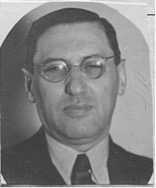Émile ZWEIGENTHAL
![]()
| Born : | 30 December 1885, Hovorany, Hodonín district (Goeding), Moravia (Mähren), Austria-Hungary |
| Died : | 5 august 1944, Auschwitz, Poland |
| Origin : | Jewish |
| Occupation : | Dental technician |
| Command of languages : | German, Czech, Spanish |
| Parents : | Sigmund and Rosa Zweigenthal |
| Sibling(s) : | Irene Zwigenthal |
| Spouse(s) : | 1. Elena Zweigenthal (née Heinrich)
2. Etela Zweigenthal (née Alt) |
| Children : | Hans Zweigenthal; Werner Zweigenthal; Marguerite Sputz (stepdaughter) |
Early life
Born in Hodonín on 30 December 1885, Émile Zweigenthal was the son of Sigmund and Rosa Zweigenthal. The town of Hovorany (in german “Goeding”), which you can nowadays find in Moravia, Czech Republic, near the Austrian.
Sigmund Zweigenthal (born around 1857 and died in September 1914, at the very beginning of world war I) was a merchant in Hovorany and his job managed to secure the whole family sufficiently.
Émiles mother name was Rosalia (Rosa) Zweigenthal (1858 – December 1919, Jewish Hospital, Vienna, Austria), born Platzek. Émile also had a younger sister, Irene Zweigenthal.
We cannot say with certainty, that Émile’s family were practicing Jews, although it is possible, that they visited the Hodonín synagogue during the most important religious holidays (the synagogue doesn’t exist anymore – it was damaged by the Nazis and torn down shortly after during world war II).
Sadly, we are missing more information about Émile’s childhood but we can imagine that it was joyful. His family never had troubles with famine or the lack of money. Émile attended the Hovorany Elementary school together with the German children for five years (that was the mandatory primary education). The school was known for trying to lift the barrier between the Czech and German children, by providing them equal numbers of lessons of Czech and German language. This ever-growing difference between the people of the two nations was caused mostly by the expansion of nationalism towards the end of the nineteenth century.
After obtaining elemantary education Émile continuied his studies for three more years to the become a dental techician. At that time this profession differed from a dentist mostly by the duration and type of ones studies. A dentist had to attend a medical school (university) while a dental technician had to be a apprentice for three years, followed by six years of assisting, before they could open their own office.
In 1899 the whole family moved to Vienna, the capital of Austria-Hungary, which was only about a hundred kilometres from Hovorany. This move can be linked with the rural exodus and the industrialization of the region. In Vienna Émile continued his studies and worked as a assistant in a dental office for six years.
Shortly after finishing his studies in 1906, he left his family and Vienna and moved to Chamnitz, Germany (cca two hundred kilometres from Prague), where he started his career as a dental technician. The city of Chemnitz was expieriencing a big boom during those times. Thanks to urbanization and industrialization (the town was nicknamed the « Manchester of Saxony »). Around the year 1914 the town had more than 320 000 citizens.
It is quite possible that Émile made dental prostheses and dental arches, as well as other small surgeries that were usually the job of a dentist.
Family, life in Chemnitz
During his stay in Chemnitz he met Elena Heinrich, who later became his first wife. We can draw the conclusion thanks to her maiden name, that she was German.
Elena came from Eastern Pomerania, which, after WWII became a part of the polish territory. She was born in the year 1882 in the town of Sopot, which was a part of the German empire, and mostly inhabited by Germans. Few years later Elenas family moved to Charlottenberg (nowadays in Sweden). Her father, just like Émiles, was a merchant, so it is quite possible that the two of them got along well. Elena’s mother’s name was Lauriette Heindrich (born Paradir). The family wasn’t Jewish. We can’t do nothing but wonder if the marriage of Émile and Elena was approved of or not.

Hans Zweigenthal
In June 1910, shortly, after Émile and Elena got married, their first son, Hans Zweigenthal, was born in Chemnitz. The newt year their second son, Werner Zweigenthal, was born. It is interesting to mention, that the two sons had names typical German names, which again demonstrates to us the family’s willingness to assimilate into the German society.
In 1911 Émile began to have his first difficulties with the police. He was sentenced to eight days in prison for driving a car without a license. The few years before WWII were also the time of Émile’s political awakening. He started to sympathize with the social democrats. Since Chemnitz was a large industrial town at the time, it isn’t surprising that the social democratic party had a large representation there.
Émile’s stay in Berlin
We don’t have any documents about Émile’s service in the army during WWI but we do know that towards the end of it Émile and his family moved to Berlin. There Émile continued engaging in politics and actively participating in the social democratic party. He also managed to receive a German citizenship during his stay there.
While Émile was living with his family in Berlin his parents, who stayed in Vienna, passed away, his father in 1914 and his mother five years later, in 1919. Both of them were buried in the Zentralfriedhof cemetery in Vienna.
It was during the time Émile’s family spent in Berlin, that his wife, Elena, also passed away.
In the period following WWI, the political and economic situation in Germany degrades. During the Great Depression, the influence of Nazi party continues growing. Their propaganda begins to be openly antisemitic in the early 1930s and violent encounters with the SA become more frequent. Émile’s sons understood the danger they were facing and emigrated to Buenos Aires, Argentina, in 1930.
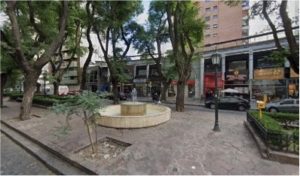
This is the building where the two brothers resided during their first couple of years in Buenos Aires
Meanwhile, a little after 1933, when Hitler became the chancellor, Émile moved back to Vienna, where he reconciled with his sister Irene.
After the death of his wife Elene Émile lost all the protection the marriage to a German provided to him. This became even more problematic after the enactment of the Nuremberg laws in 1935.
Émile’s stay in Vienna
After his move to Vienna in 1932 Émile continued to engage in politics which had as a consequence constant surveillance and persecution by the Austrian police. Even though Austria isn’t yet under complete Nazi control, the regime is very much authoritarian and more and more under the influence of Germany. To be exact, Émile was imprisoned for eight months for “public provocation”. It is possible, that he participated in a protest against the Nazi régime. In 1935 he was arrested again and put in prison just for two days for causing a minor injury. A year later he served another day in prison. We presume that the reason behind these imprisonments is him being a member of the social democratic party. This information comes from documents written by the Belgian police who did a background check on him to be able to validate (or not) his demand for asylum.

Documents of the Belgian police in Flemish (State Archives of Belgium)
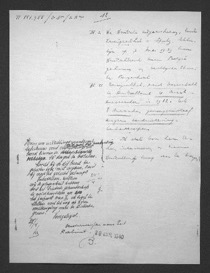
In 1933 Émile filled out paperwork to try and emigrate to Argentina to join his family. He probably supposed that it wouldn’t take long for him to be able to leave the country so he stated to learn Spanish. In the paperwork we were able to gain access to we found out his adress in Vienna, Loblichgasse 10 in the 4th arrondissement. During these times, still a widower, he did not have a steady income. It is quite possible, that he didn’t have a job at the time. One of the reasons might be the economic crisis, which took away the jobs of many, but the more possible one is that he did not want to open his own practice, because he still believed he was going to leave soon for Argentina. In the questionnaire (that was just one of the many steps of the procedure) Émile had to fill out, he mentioned that in Argentina he would like to continue his job as a dental technician and open his own office. In the same document he also wrote that he had been a dental technician for 27 years. He was also interested in working in the agricultural sector.
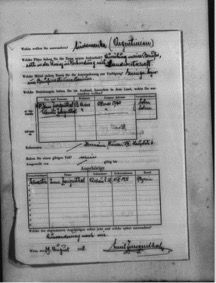
Questionnaire Émile had to fill out to be able to emmigrate to Argentina (Archive der Israelitischen Kultusgemeinde Wien)

Sadly Argentina turned away Émiles request, therefore he was forced to stay in Europe. The rejection of his request can be explained by his judicial past and his engagement in politics but also by the reticence of Argentina to accept immigrants during the times of crisis. After WWI Argentina became more and more closed of to foreigners which became visible during the late 1930 as war loomed over Europe. The requierements for immigrants made quite high by the Argentinian governement and the paperwork requiered percise information which made it hard for Jews, evading persecution, to enter the country. Eventhough Émile wasn’t able to make it to Argentina, his sister, Irene had more luck. On the 15th of September, 1938, she met with her nephews in Buenos Aires, where the three of them lived together for a while. Later Irene worked as a nurse.
During his stay in Vienna Émile was able to receive Austrian citizenship. He also met his second wife, also widowed, Etela Alt. They got married in September 1939 in the jewish district Leopoldstadt in Vienna. Etela had a daughter from her previous marriage, Marguerite.
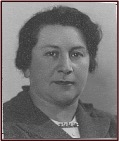
Etela Alt
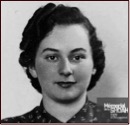
Marguerite Alt
In 1938, the situation in Austria worsened quickly. In spring Austria got annexed by Germany and became a part of the Third Reich. Immediately after the Anschluss of Austria the Nazis started to get rid of opposition, like the communists and the social democrats. Just like in Germany they started gathering Jews in ghettos, where they stayed until they got transported to a concentration camp and later into an extermination camp. After the Anschluss Émile became by the Nurnberg laws a citizen of the second category, which meant he didn’t become a citizen of the Third Reich. Since he wasn’t protected by the law anymore the only possibility for him was to leave. If he didn’t leave the country, he would be imprisoned and transported into a concentration camp immediately. He would also be deported much quicker than the rest of the Jews living in Austria, since he was also a social democrat.
Émile’s arrival in Belgium
The family was banished from Austria and so they decided to move to Belgium. In that time around 100 000 Jews tried escaping the Nazi regime. In may 1939 Émile and his family crossed the Belgian borders and received temporary asyle in Anvers, to be specific in Leescorf street, Borgerhoutu, which was one of the smallest Anvers districts,. Together he and his wife Etela, alondside his stepdaughter Marguerite requested to be given asyle as political refugees. In their request they also wrote, that they weren’t in need of financial assistance and that they weren’t in need of a job. Their request was approved and they were permitted to stay but only for a certain time. After that Émile tried to emmigrate to Argentina, this time with Etela and her daughter, but still without any success.

Émile’s, Etela’s and Marguerites demand for stay in Belgium
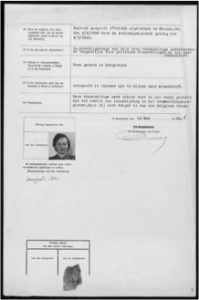
During his stay in Belgium, the Belgian police conducted an investigation on Émile. He was surveilled most of the time. The Belgian authorities were probably interested in all the immigrants who wanted to stay permanently in Belgium. Because of Émile’s past they focused on him and his family more. As a result of them finding out about Émile’s imprisonment in Austria, they decided to banish him from Belgium. During these times there was a lot of letters exchanged between the police and other authorities regarding his crimes in Austria. We had the chance to see these documents in the Archives of the Belgian Police. Émile was qualified as a threat to the public and he was expelled from the country. He and his family weren’t given permission to prolong their stay there a they were given time just until the 20th July 1940. If they didn’t leave by then, they would have been faced trial and later been deported. They decided to leave Belgium before the 20th without informing the authorities.

One of reports made by the police regarding Émile
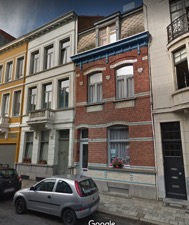
Émile’s place of residency in Belgium (google maps)
The family’s stay in France
After the family left Belgium, they moved to France. They entered France the 13th of April 1940. The 20th July 1940 France surrendered to Nazi Germany. As a result of the armistice, France was divided into two – the north, which was occupied, and the south (Vichy France), which collaborated with Germany. Émile and his family moved south to Lyon, where they lived on the Baudelaire street in the house n°7, on the outskirts of Lyon, in the Villeurbanne district. During WWII Lyon was one of the biggest centers of the French resistance. The Lyon resistance was actually based in Villeurbanne. Together Émile and his stepdaughter joined the resistance. Both of them worked under the pseudonym “Zearing” which means in German “zealous”.
In 1942 the Germans also occupied south France which was followed by a massive increase in arrests of Jews living in France. Members of the resistance were harshly persecuted. Émile and Marguerite managed to conceal their activities for quite a long time. In the spring of 1944 the gestapo arrested the head of the resistance and continued to arrest more and more embers of the resistance.
The 3rd of July 1944 Émile and Marguerite were sadly arrested in their home. They were turned in by the owner of the house they lived in, known in the documents as Madame Alix. In the paperwork regarding their arrest we found out, that the reason behind their arrest was mainly their Jewish origin and their work with the Resistance. Etela avoided the arrest only because she wasn’t in the apartment at the moment. Lucky for her, the few weeks before the liberation there weren’t any more arrests happening. A few days later, from the 8th to the 14th of July 1944, they were interned in the Fresnes prison. On the 14th of July they were transferred to the Drancy prison camp in the outskirts of Paris. Here he was interned under the number 25119. Marguerite was also in Drancy.
On the 31st July of 1944, three weeks before the Liberation of Paris, both Émile and Marguerite were transported to Auschwitz in the Transport n°77. This is confirmed thanks to the testimony of Madame Frédérique Van Compenolle (maiden name Tandler), who was also in the French resistance. In the list of deportees, she is mentioned under the name Frederike Hornstein. Madame Van Compenolle confirmed (we found this information in a testimony she gave on 5th of January 1953) that she was in the same transport as Émile and Marguerite.
Émile dies on the 5th of August 1944 in the Auschwitz concentration camp.
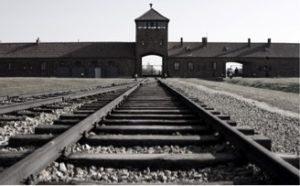
The entryway to the Auschwitz concentration camp (www.trekearth.com)
Émiles name on the Shoah Memorial in Paris (top left) (www.findagrave.com)


 Français
Français Polski
Polski